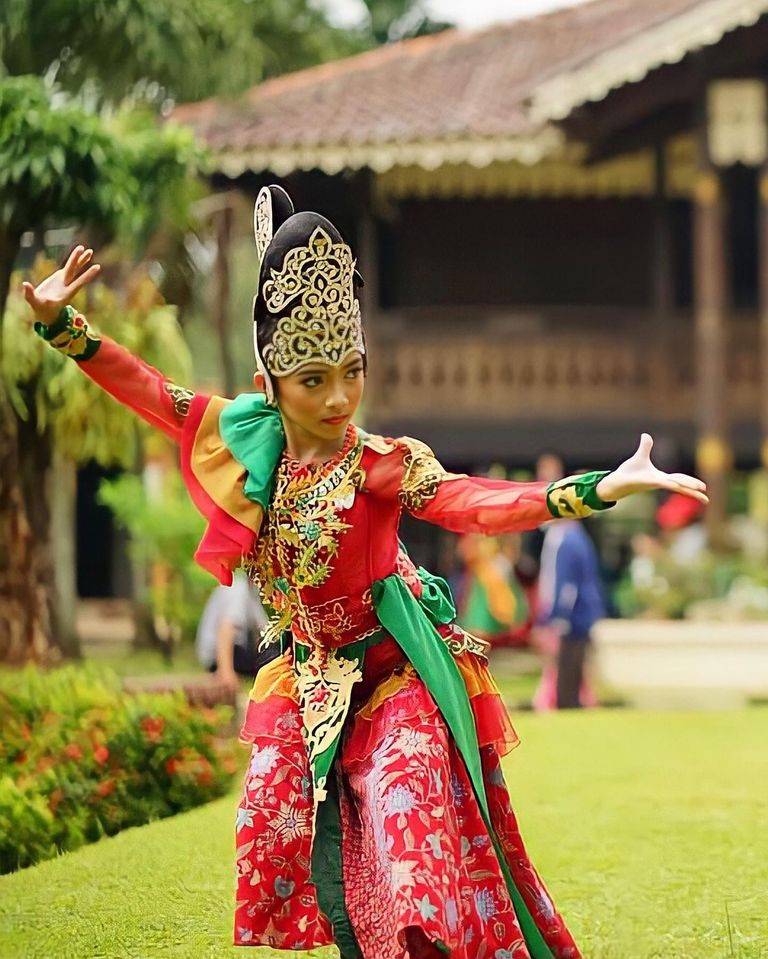
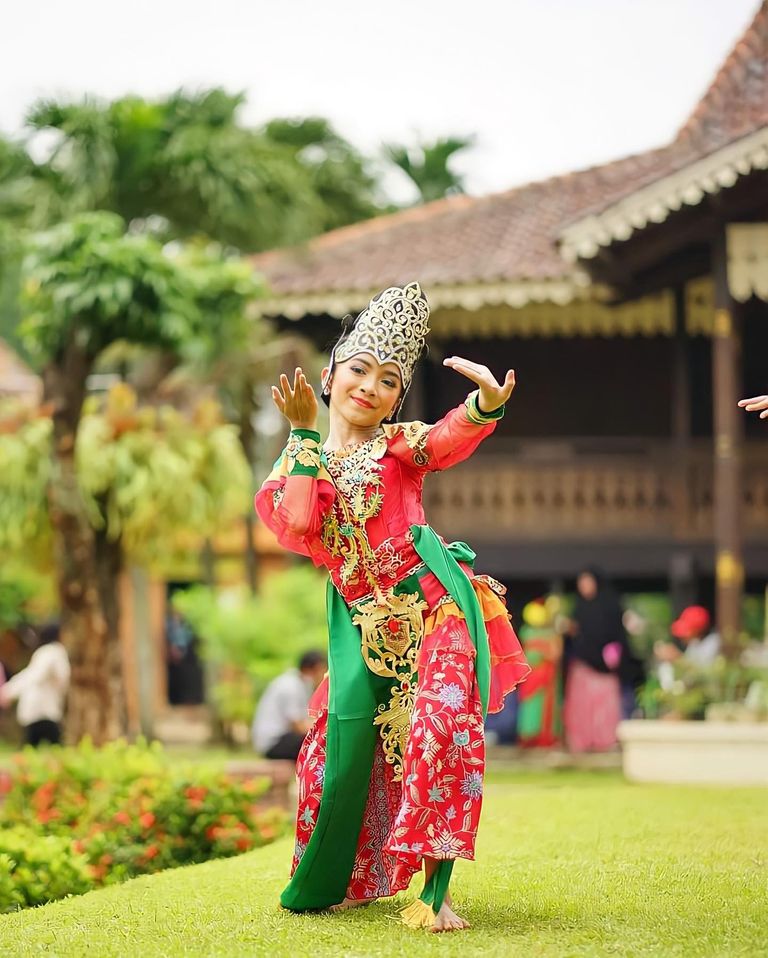
good night blurt friends, tonight I will post about the beauty of the jaipong dance
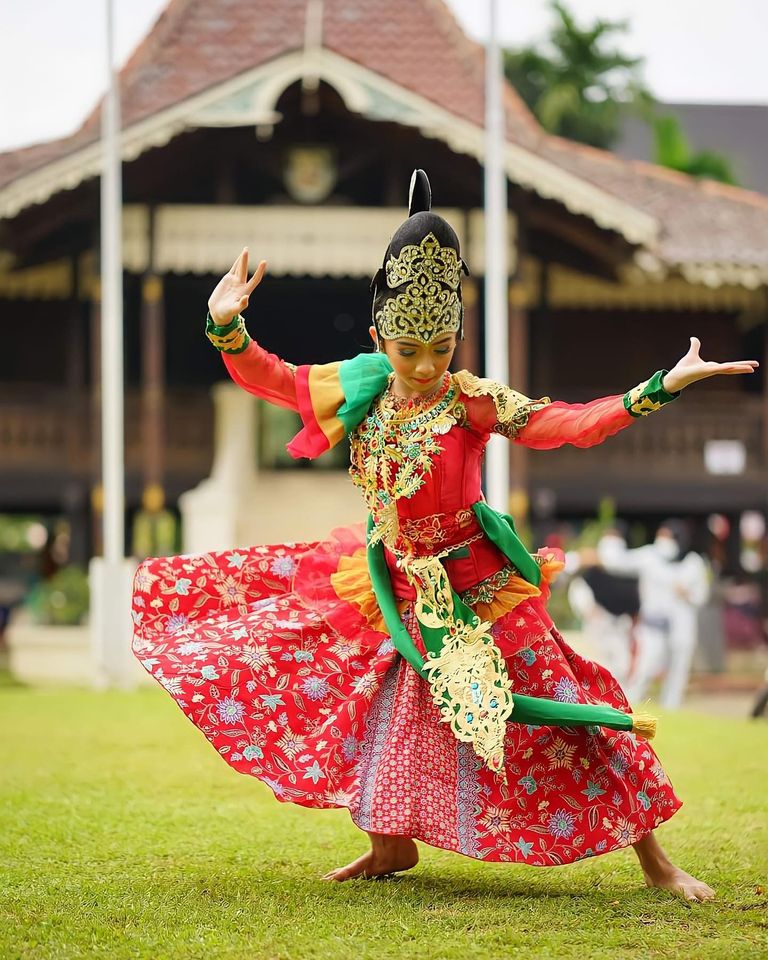
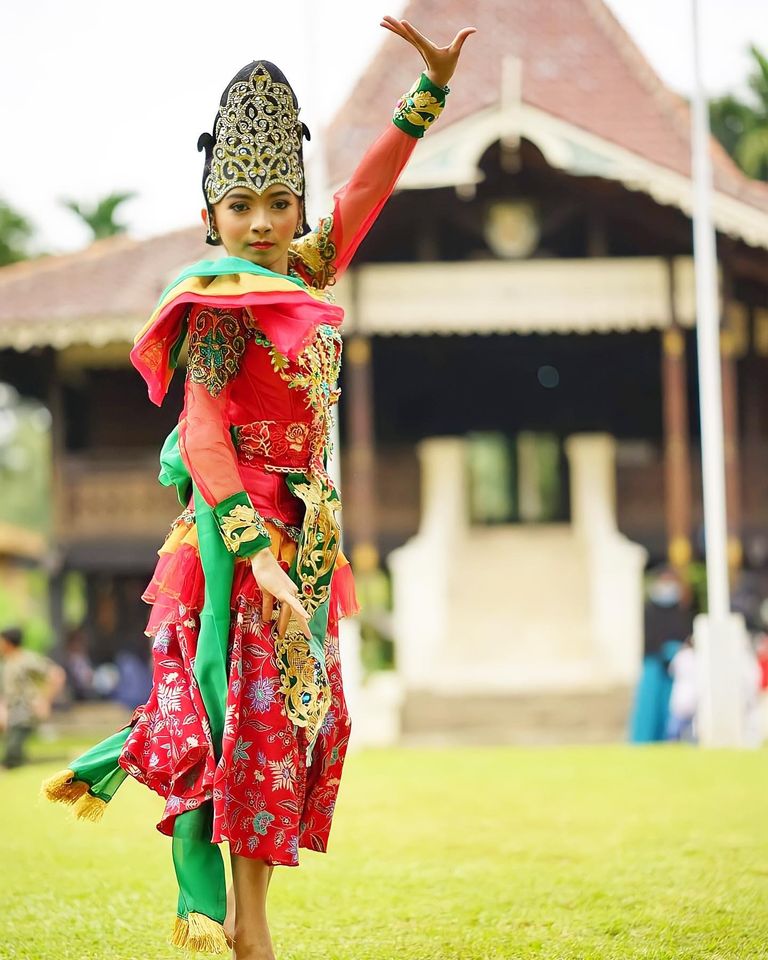
Indonesia does have many types of traditional dances. All of them are spread throughout Indonesia. From Sabang to Merauke, they have their own traditional dances.
One of the traditional dances in Indonesia is the Jaipong Dance. This dance is a type of dance originating from West Java. Initially, this jaipong dance developed in the Bandung and Karawang areas.
Jaipong dance is a dance that combines a number of traditional arts, such as pencak silat, tap tilu, and wayang golek. From there, this dance is popular as a dance that has unique, energetic, and simple movements.
Not only energetic, the jaipong dance is also played in a humorous and cheerful atmosphere. Therefore, this dance can entertain the audience who witnessed it. In fact, it is not uncommon for the audience to laugh when they see this jaipong dance performance.
Those who laugh are because they feel carried away when watching. This unique dance originating from West Java is still being preserved and studied.
Well, in this discussion, we will discuss the Jaipong Dance. How is the history, movement patterns, characteristics, meaning, and development of this dance. Here is the full review.
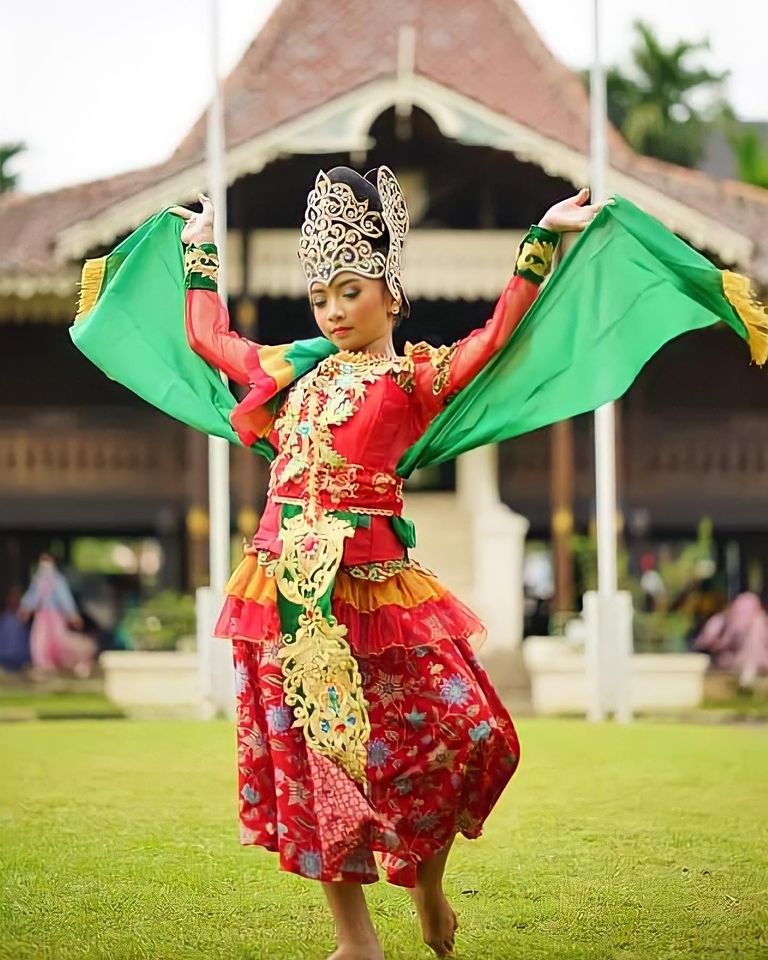
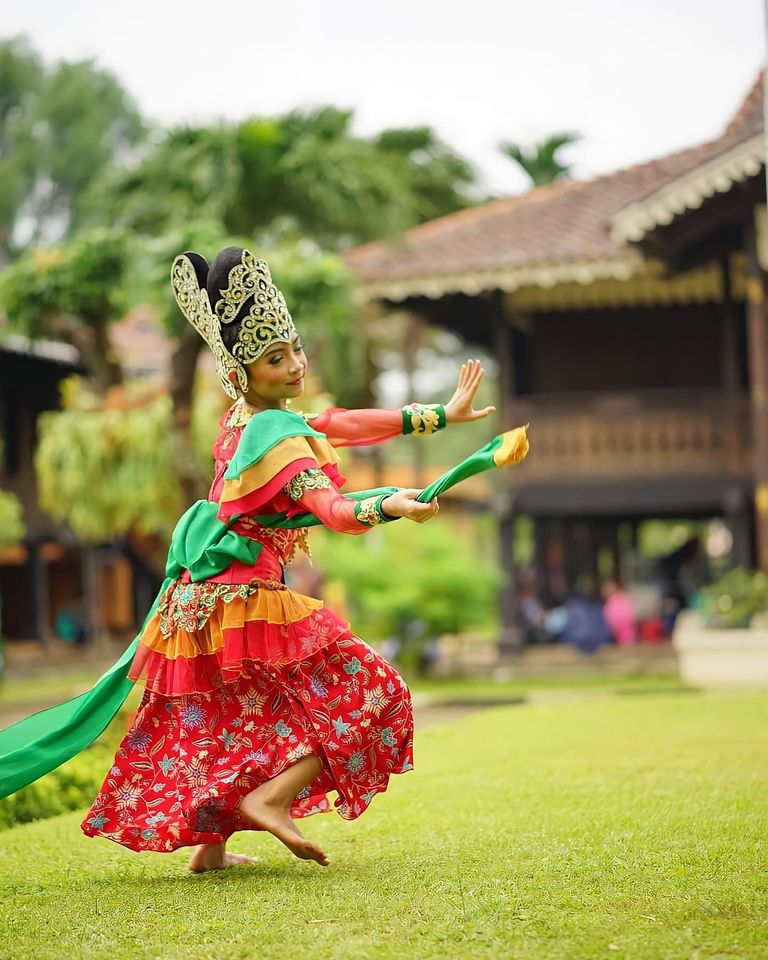

History & Origin of Jaipong Dance
Jaipong dance is a traditional dance originating from the Karawang area, West Java. This dance developed in the era of the 1960s. Initially this dance was known to the public as the Banjet Dance. A dance performance that is performed with dance movements and accompanied by music in the form of gamelan instruments.
In the past, this dance was used as entertainment for the community. The jaipong dance is an innovation made by an artist from the Karawang area named H. Suanda.
Haji Suanda is a talented artist from the Karawang area. He has extraordinary talent. And has the expertise to master a number of traditional Indonesian arts from various regions, especially the Karawang area. Some of the regional arts that he controls include Wayang Golek, Pencak Silat, Tap Tilu, and Mask Banjet.
Then, H. Suanda made an innovation. He created innovations in the form of combining several kinds of dances that he mastered into one. The dances consist of Banjet Dance, Pencak Silat Dance, Tap Tilu Dance, Wayang Golek Dance, and Mask Dance. The result of this mixing is the emergence of a unique regional art that is loved by the community.
At the time the regional art performance was held, the name Jaipong dance had not yet been given. The musical accompaniment used in the performance uses musical instruments, including the drum, gamelan, gong, and other tapped musical instruments. The combination of various types of musical instruments gives birth to a dance music that is very energetic and unique.
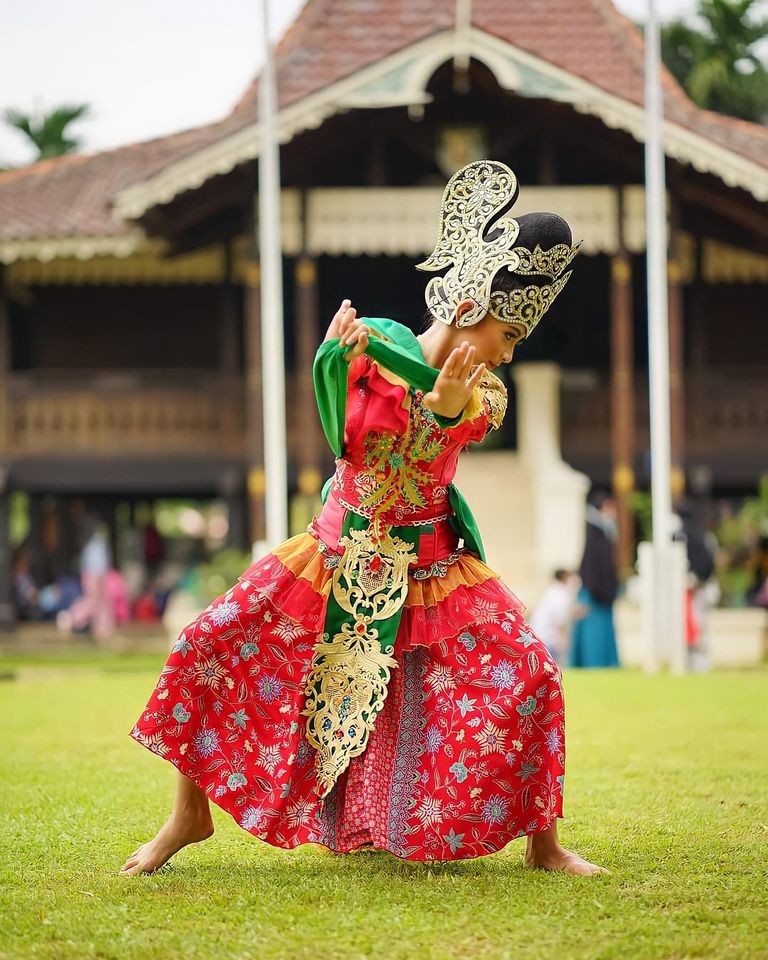
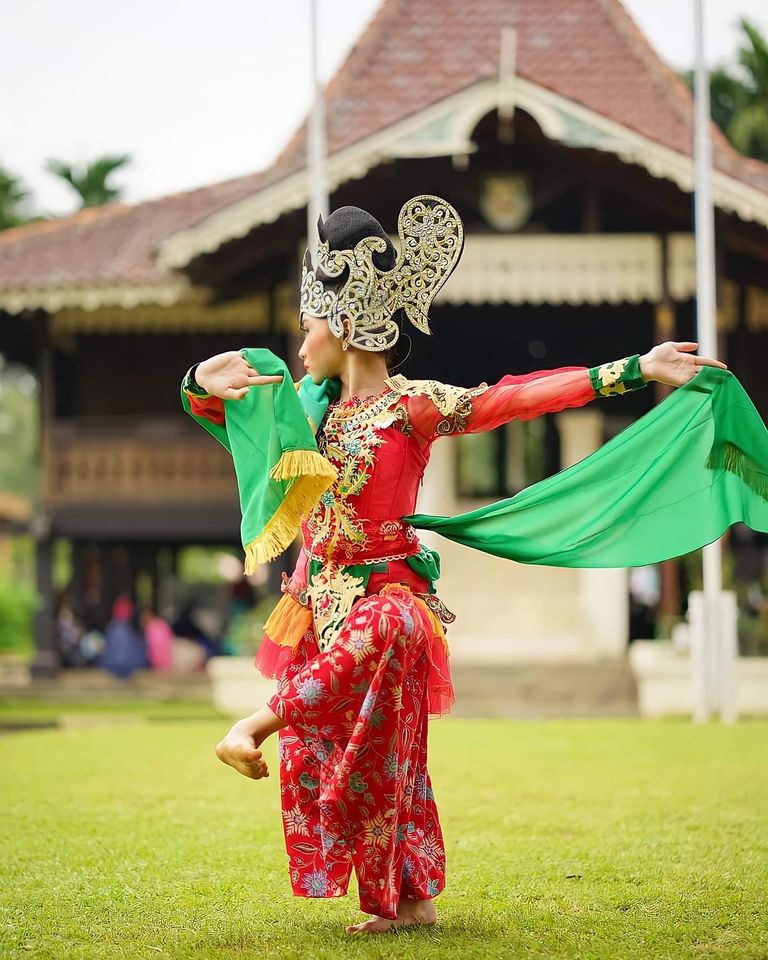
Jaipong Dance Movement Pattern
Jaipong dance has a movement pattern that is quite important when dancers perform the dance on stage. The pattern of movement in this dance has a considerable influence on the appearance of dancers when they are performing on stage.
Jaipong dancers will perform dance moves very energetically, and are unique but still seem simple. Despite performing simple movements, this dance still has its own uniqueness and characteristics. So that many people like, and are interested in this dance.
Then, what are the movement patterns of Jaipong Dance. Here are 4 movements in the jaipong dance:
- Aperture
The first jaipong dance movement is the opening movement. This movement is the opening movement when the show is about to start.
In general, the dancers perform movements by walking in circles, and while playing a shawl that is wrapped around the dancer's neck. Dancers perform this opening movement gracefully. In order to be able to attract the attention of the audience who witnessed the Jaipong dance performance.
- Betray
The next Jaipong dance movement is the begging movement. This movement is a dance movement that has a fairly fast tempo accompanied by music and songs that are also quite fast.
This movement is also performed by dancers with passionate movements. Therefore, the begging movement is able to make the audience get carried away and enjoy this jaipong dance.
- Ngala
The third jaipong dance movement is the ngala movement. This movement is a broken motion. The movement is a movement from one point to the next, and is done using a very fast tempo. This Ngala movement is one of the movements that makes the Jaipong dance unique.
- Minci
The last movement of this Jaipong Dance is Mincit. This movement is a movement from one variation of movement to another. The Mincit movement is performed by the dancers after the dancers perform the Ngala movement.
If you watch the Jaipong dance performances live or from television, you will understand it. In addition to the movement patterns above, there are also basic movements that also have an influence when playing the jaipong dance.
Not only that, this basic movement also needs to be mastered as a basic movement and overall guide to dance movements when playing the jaipong dance. In general, the basic movement is divided into 3 parts. What are they? Let's look at the following explanation.
Geol is a movement that focuses on the hip area.
Gitek is a movement by swinging the hips accompanied by a beat.
Rocking is a movement of the hips that is done without using a beat.
Well, those are some of the movements in the jaipong dance. Not only movement patterns, Jaipong dance also has its own characteristics. To find out the characteristics of the Jaipong dance, let's see the full review below
Characteristics of Jaipong Dance
The Indonesian nation is known as a country that is not only rich in natural products, but also rich in culture. Starting from the field of literary arts, dance, fine arts in the form of applied and pure art, building arts, music arts and so on.
From the diversity of traditional arts that are very diverse, of course each art has its own characteristics. With one of the dance arts originating from West Java, namely Jaipong dance.
This dance has a special characteristic, especially in the jaipong dance, the kaleran style. Among them are humanism, cheerfulness, enthusiasm, eroticism, simplicity, and spontaneity.
Thank you